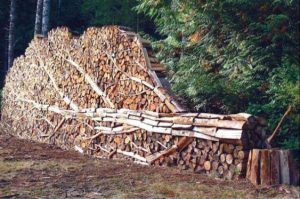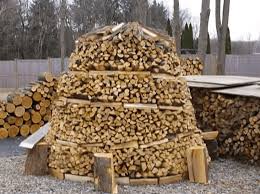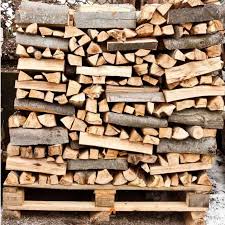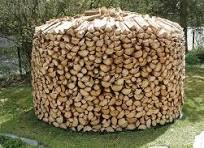
Stacking firewood could be an art in its own right
There’s a peculiar art to stacking firewood, and if you’ve ever seen a seasoned pro at work, you’d swear they’re auditioning for a role in a firewood-themed Cirque du Soleil. But the truth is, there’s more to this task than simply throwing logs in a pile and hoping for the best. Whether you’re looking to impress your neighbors, maximize your wood’s drying potential, or just keep your backyard from looking like a lumberjack’s rummage sale, the method matters. Let’s dive into some tried-and-true firewood stacking techniques from around the world, each with its own charm and purpose.
The American Classic: Straight and Sturdy
This method is as straightforward as a cowboy on a cattle drive. Stack your logs in rows, preferably on a raised platform like a pallet or some spaced-out two-by-fours to keep them off the damp ground. Arrange the logs with their cut ends facing out, making a long, rectangular pile that’s neat and easy to access. Top it off with a tarp for weather protection, leaving the sides open for airflow. This is the go-to method for simplicity and functionality—perfect for those who like their firewood like their burgers: classic and reliable.

The German Holzhaufen method of stacking wood
The German Holzhaufen: Round and Resilient
Leave it to the Germans to turn stacking firewood into an engineering marvel. The Holzhaufen, or “wood heap,” is a circular stack that’s both efficient and visually stunning. Start by creating a small circle of logs with their cut ends facing outward, then stack additional layers inward and upward to form a cone-like shape. This method promotes excellent airflow, ensuring your wood dries evenly, and it’s sturdy enough to withstand the occasional curious raccoon. Plus, it’ll make your yard look like a rustic work of art—who doesn’t love functional aesthetics?
The Amish Crisscross: Built to Last

The Amish Criss Cross method of stacking firewood allows for ample airflow
The Amish, known for their practical and sturdy craftsmanship, bring us the crisscross method. It’s simple: stack layers of logs alternately perpendicular to one another, forming a stable and breathable structure. This technique is ideal for people who live in windy areas or have a penchant for order. It also doubles as an exercise in patience and precision—a great way to practice your Zen while prepping for winter.
The Scandinavian Holzstapel: Tall and Tidy
The Scandinavians, with their reputation for impeccable design, take stacking to new heights with the Holzstapel. Picture a mini log skyscraper, built by stacking logs in an upright position around a central pole or support beam. This method is excellent for space-saving and drying efficiency, making it a favorite for those with limited yard space. Just be warned: if you don’t build it with care, you’ll end up with a very loud (and potentially painful) game of Pick-Up Sticks.
The Norwegian Round: Cozy and Creative
The Norwegian Round is a cousin of the German Holzhaufen but with a slightly less rigid approach. Start with a circular base and stack the logs inward, creating a dome shape that’s both functional and picturesque. This method is perfect for smaller quantities of wood or for those who appreciate a touch of whimsy in their yard. Bonus points if you add a few fairy lights and turn it into a centerpiece for backyard gatherings.
Tips for All Methods
- Location, Location, Location: Pick a spot with good sunlight and airflow. Avoid areas prone to standing water.
- Keep It Safe: Stacks should be no higher than 4 feet to prevent accidents and maintain stability.
- Elevation is Key: Keep your stack off the ground to prevent moisture and pests from creeping in. Use pallets, a firewood rack, or a base made of parallel boards.
- Drainage Matters: Ensure proper drainage around the stack to prevent water pooling.
- Distance from the House: Keep the stack 3-5 feet away from your home to avoid pest problems and improve safety.
- Cover Strategically: Protect your stack with a tarp or roof, but leave the sides exposed to allow for proper ventilation.
- Safety First: Always stack firewood securely to avoid collapses, especially if you have curious kids or pets running around.

Norwegian Round wood stack
Wrapping It Up
Stacking firewood isn’t just a chore—it’s an opportunity to channel your inner artist, engineer, or Zen master. Whether you go for the straight-shooting American style, the artful German Holzhaufen, or the practical Amish crisscross, there’s a method to fit your needs and personality. And if all else fails, just remember: as long as the wood dries and stays put, you’re doing it right. Now grab those gloves, channel your favorite lumberjack, and get stacking—winter isn’t going to wait, and neither should you!



0 Comments